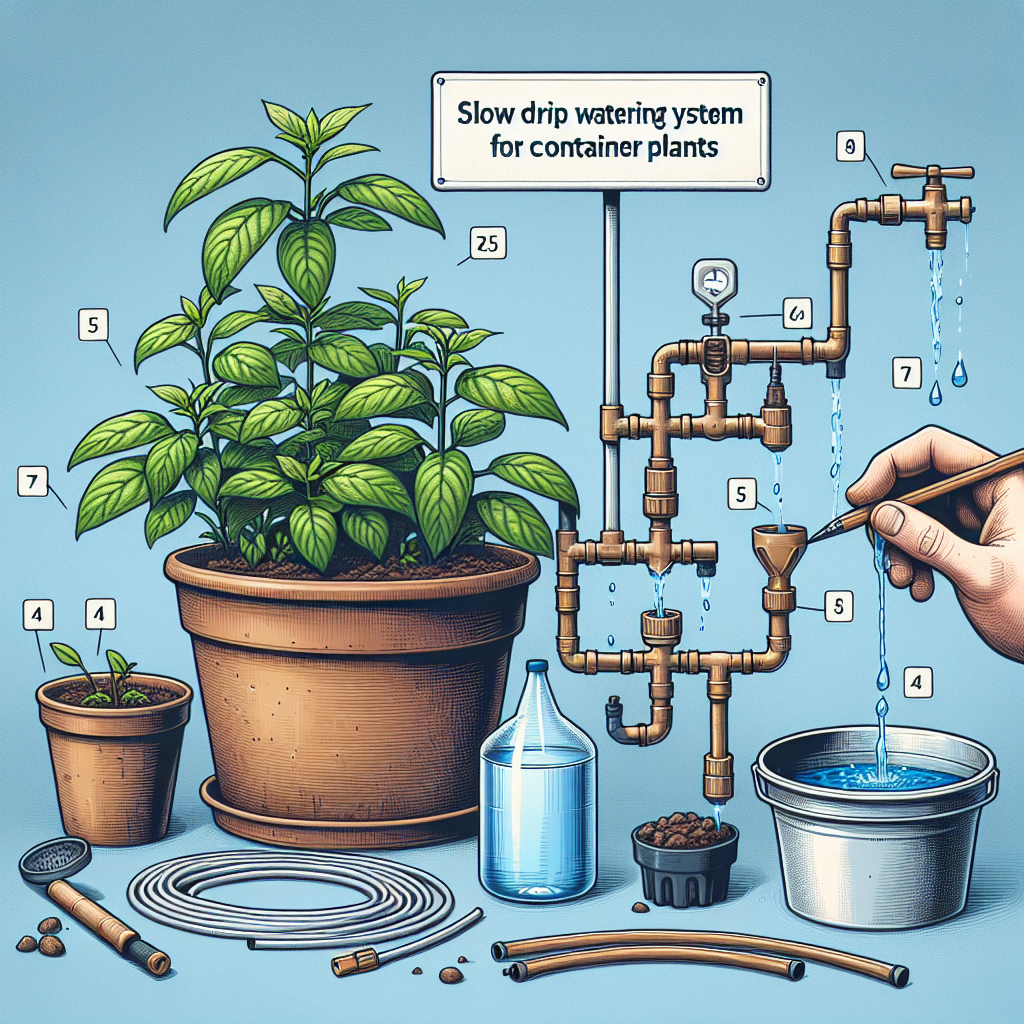Setting up a slow drip watering system for container plants is a great way to ensure your plants receive the consistent moisture they need without the hassle of hand-watering every day. This system can also help prevent overwatering, reduce water waste, and allow you to automate the watering process, making it easier to care for your plants while you’re away from home. In this article, we will discuss how to set up a slow drip watering system for your container plants.
1. Choose the Right Materials
To set up a slow drip watering system, you will need a few key materials:
– Drip irrigation tubing: This tubing is designed to release water slowly and evenly throughout the container.
– Drip emitters: These small devices are attached to the tubing and control the flow of water.
– Hose connectors: These connectors are used to connect the drip irrigation tubing to a water source.
– Timer: A timer can be used to automate the watering schedule.
2. Prepare Your Container Plants
Before setting up the slow drip watering system, make sure your container plants are properly prepared. Ensure that each plant has good drainage by adding a layer of gravel or pebbles at the bottom of the pot. This will prevent water from pooling at the roots and causing root rot.
3. Install the Drip Irrigation Tubing
Once your container plants are ready, it’s time to install the drip irrigation tubing. Start by cutting the tubing to size, making sure it reaches all of your plants. Use hose connectors to connect multiple pieces of tubing together if necessary.
Next, attach drip emitters to the tubing near each plant. The number of emitters you use will depend on the size of your containers and how much water each plant needs. Make sure the emitters are placed close enough to each plant so that water reaches all parts of their root systems.
4. Connect to a Water Source
After installing the drip irrigation tubing and emitters, connect them to a water source. You can attach a hose connector to one end of the tubing and connect it to a garden hose or outdoor faucet.
Alternatively, you can use a timer connected to an outdoor spigot or indoor water source. The timer will allow you to set specific watering schedules for each plant, ensuring they receive just the right amount of water at regular intervals.
5. Test Your System
Once everything is set up, it’s important to test your slow drip watering system before leaving it unattended for an extended period. Turn on the water source and check for any leaks or issues with water flow.
Make sure each plant is receiving adequate moisture from their respective emitters and adjust as needed. You may need to increase or decrease the flow rate depending on how quickly each plant’s soil dries out.
6. Monitor and Adjust as Needed
Even after setting up your slow drip watering system, it’s important to monitor your plants regularly and make adjustments as needed. Check that each plant is healthy and receiving enough water by feeling their soil moisture levels regularly.
If some plants appear wilted or dry despite being watered with the system, they may need additional hydration or adjustments made with their individual emitters.
7. Benefits of Slow Drip Watering Systems
Setting up a slow drip watering system offers several benefits for container plants:
– Consistent moisture: Slow drip systems provide consistent moisture levels over time, preventing underwatering or overwatering.
– Water conservation: By releasing small amounts of water directly at plant roots, less water is wasted through evaporation or runoff.
– Easy maintenance: Once set up correctly, slow drips systems require minimal maintenance compared with traditional hand-watering methods.
– Automation: Timers can be used with these systems so that you can set schedules when you’re away from home.
In conclusion, setting up a slow drip watering system for container plants is an effective way to ensure they receive consistent moisture without overwatering or wasting precious resources through evaporation or runoff. By following these steps and tips outlined in this article, you’ll be able to create an efficient and easy-to-maintain irrigation system that will keep your container plants happy and healthy year-round!














